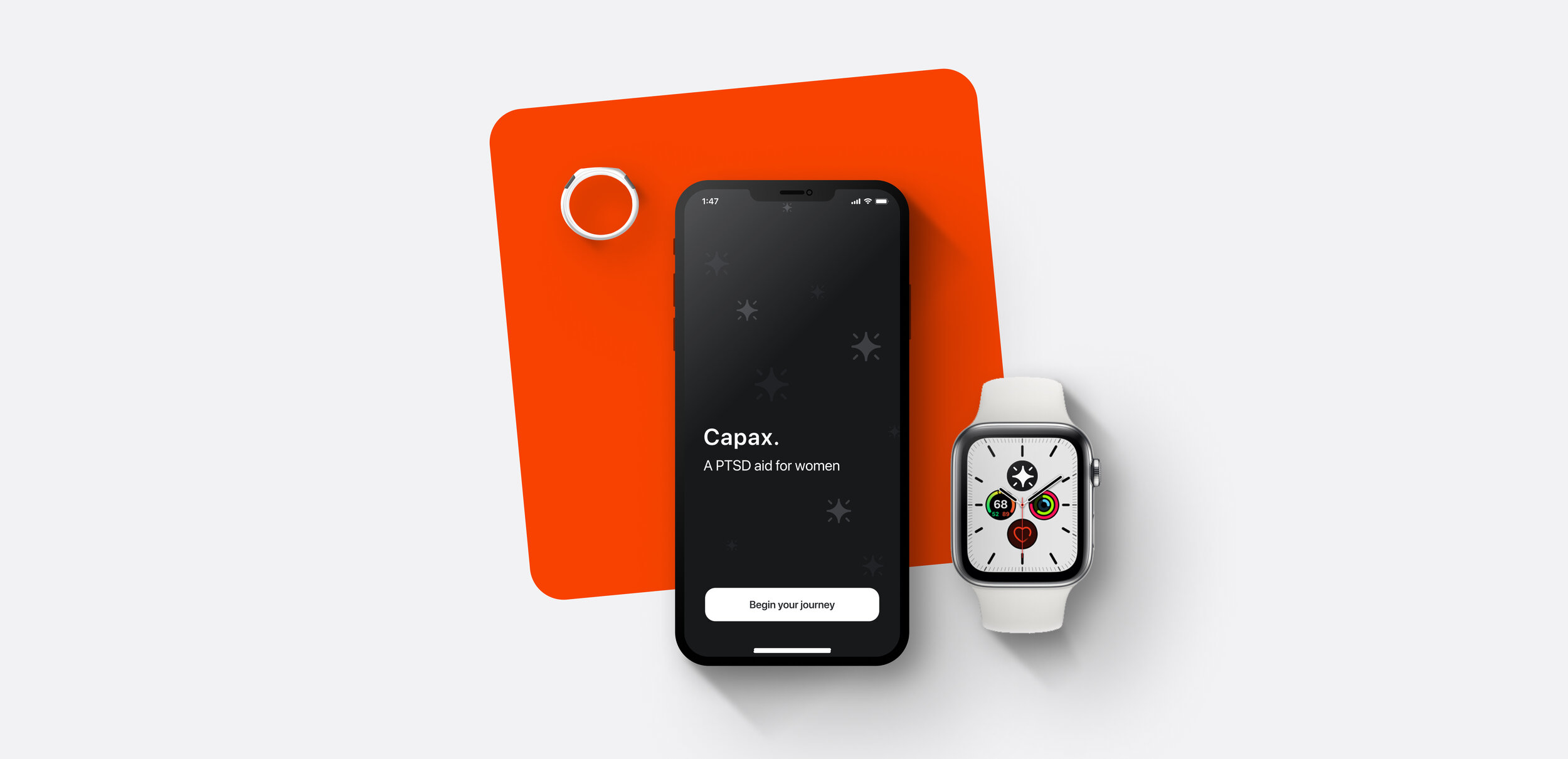
Project overview
After seeing the effects of trauma and the lack of hope for those experiencing PTSD, I researched and explored helpful treatments, then designed a solution to help.
Users
Women with post-traumatic stress
Therapists who would like a new resource to help their female clients and to enhance their connection with them
Women are 2x more likely than men to develop PTSD and they suffer with it 4x longer.
PTSD is a disorder which causes difficulty recovering after experiencing or witnessing a terrifying event.
Problems
Journaling
Trauma recovery is greatly benefited by journaling, but most people don't enjoy journaling, and it takes a lot of effort.
Awareness
Trauma often follows patterns, yet recognizing and identifying them can be challenging. This information can be difficult for therapists to uncover.
Recency Bias
In therapy, people typically focus on and remember what happened most recently. Therapists rarely get a full picture of a client’s week.
Solutions
Journaling
Make tracking symptoms effortless with a tap on the Capax smart ring, a smart watch, or phone. Also give those who want to add more clarity the option of a robust journaling tool.
Awareness
By analyzing data, we can identify patterns in symptoms. We can then alert or give mental health tips to reduce stress when we notice patterns of elevated stress at given locations and/or times.
Recency bias
Encourage linking of data with a therapist so the therapist is able to understand the data behind a client’s recovery.
Action -
Make tracking PTSD symptoms manageable
Detection - Find patterns in symptoms
Direction - Awareness of triggers to guide through healing
Suggestion - Create customizable alerts for mental health tips
Connection - Share data with a therapist and/or loved ones
Sketches
User flows
I validated my idea at a walk for mental health and separately with mental health professionals.
Interaction
The easiest way to document emotions is through a smart device, and a ring is a subtle solution. People can interact with the ring and track their symptoms without ever having to pull out their phone. A smartwatch (next easiest to document), or a phone (least easy to document) would still allow for tracking your symptoms.






An assessment determines severity of PTSD
The help desk provides a resource in crisis modes
Prototypes
After seeing how excited people were about the app idea, I designed the app user experience for onboarding. I designed everything including the design system, illustrations, flows and UI.
Reflections
The experience
This project was inspired by a friend with PTSD. Watching how despite her motivation and effort, she wasn’t finding anything to help.
For the ring concept, I sketched, cast some resin, sanded, painted, and photographed rings.
For the app, I created all the illustrations in Illustrator, Figma for the app designs, and Principle for the animations of the screens. I designed a product that will hopefully help those suffering feel a sense of control and motivation to continue their fight for survival.
I got a more holistic understanding of app design through this project as I had to design everything from the sign up flow and onboarding to settings to data visualization (you can see deep dives into these at the bottom of this screen).
What I’d do differently
In retrospect, I underestimated the size and complexity of the project. As it progressed, the complexity grew. To tackle this, I later developed a design system using Figma components and defined user flows for key journeys. Implementing these early on would have saved time and streamlined the design process.













